Search Images
Browse Content (p. 1279)
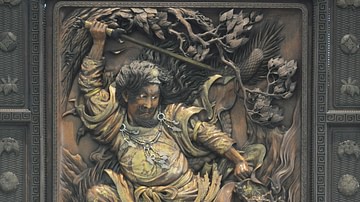
Image
Susanoo & the Dragon
Wooden screen depicting the Shinto god Susanoo defeating the dragon with eight heads, 19th century. Susanoo was the god of storms and Yomi, the underworld.
Crow Collection of Asian Art, Dallas, Texas.
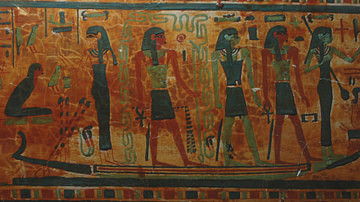
Image
Barque of Ra
The solar barque of Ra. Outer Coffin of Isetemkheb D (Royal Cache TT 320, Deir el-Bahari), Egyptian Museum, CG 610031.

Image
Dendera Temple Ceiling
Osiris, seated on a throne, sails across the sky as the personification of the full moon, accompanied by the seated goddesses Nephthys on left and Isis on the right; Ma'at stands near the bow of the ship.
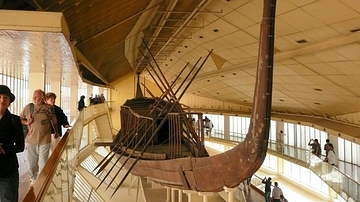
Image
Khufu's Ship
This boat was found practically intact; except for one oar, it was in remarkable condition. Built for Khufu, the ship was sealed into a pit in the Giza pyramid complex at the foot of the Great Pyramid of Giza.
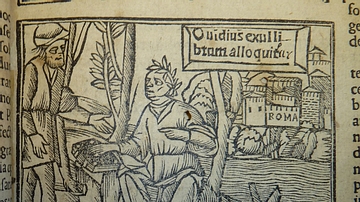
Image
Ovid Exiled
16th-century CE edition of Ovid's Tristia from Venice.
Penn Libraries, Rare Book Collection
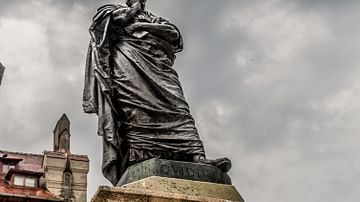
Image
Ovid
Statue of Ovid in Constanta, Romania, where he spent his later years in exile.
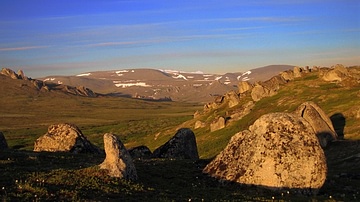
Image
Bering Land Bridge Natural Preserve
Bering Land Bridge Natural Preserve. Many parts of this area look similar to how it may have looked when the first humans arrived there, perhaps around 30,000 years ago. From there on, early humans may have crossed to the Americas by around...
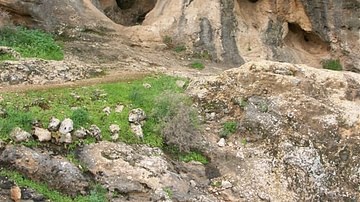
Image
Skhul Cave, Israel
Entrance to Skhul Cave, Israel. Here and at the neighbouring site of Qafzeh, Homo sapiens burials have been dated to between around 90,000 and 130,000 years ago.
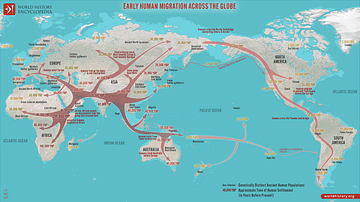
Image
Early Human Migration Across the Globe
This map illustrates the early global migrations of Homo sapiens ("thinking man"), one of the most remarkable movements in human history. Beginning with small groups venturing out of ancestral Africa, these early humans spread across continents...
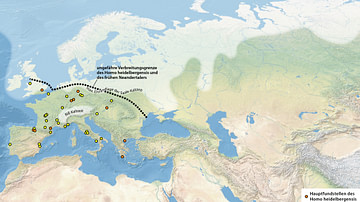
Image
Homo Heidelbergensis & Early Neanderthal Fossil Sites
Map showing fossil sites of Homo heidelbergensis and early Neanderthals.